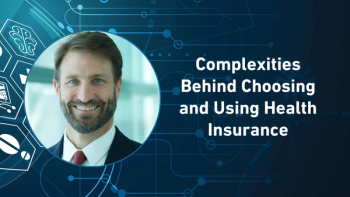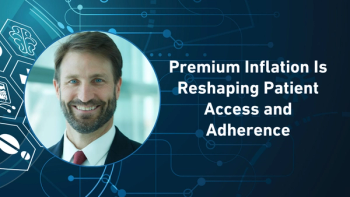
- Pharmaceutical Commerce - October 2022
- Volume 17
- Issue 5
Telehealth: Connecting the Dots
How pharma can speed up the journey with direct-to-patient models
When was the last time you endured a frustrating, time-consuming experience when looking for a service or product? How did you feel, and did you wish you could take more control? You are not alone. Eighty-four percent of customers say the experience a company provides is as important as its products and services,1 and 58% say they will sever ties with a brand that does not deliver a great customer experience.2
In healthcare and pharma, experiences have generally lagged user expectations, especially for patients seeking care. They often have to navigate a series of complex barriers to get questions answered and access the care they need due to the fact that no one entity is focused on the overall end-to-end patient journey.
But times can and should change.
Only 50% of patients report receiving the right access to the right specialist, making it one of the biggest barriers in healthcare. This, coupled with long wait times to schedule an appointment, confusion about benefits, and other hassles often plague those seeking treatment when they need it most.
But patients expect and deserve more, especially as they interact with retail brands. Consider these recent broader examples of this shift during COVID-19:
- 30 states approved the curbside closing of homes
- 38% of car sales were online
- $500 billion worth of investments were managed by robot advisors
People are now accustomed to new digital experiences and technologies. It’s now time for pharma to embrace the shift to a modern patient and healthcare provider (HCP) landscape driven by digital technology and data to enable better, faster, and more convenient access to care. It starts with embracing new ways of connecting these dots, and it starts with telehealth.
Telehealth is here to stay
The healthcare industry has made solid first steps with the acceptance and implementation of telehealth. Allowing patients to access first-in-class medical care “where they are,” has already proven to break down barriers for all types of patients, including those disadvantaged due to location, lack of resources, age, or disability. Seventy-six percent of patients report they are comfortable with the telehealth experience, and over 50% want telehealth included in their healthcare plan.
Pre-pandemic, telehealth was primarily an option for “lifestyle” conditions and brands (e.g., pink eye, migraine, and weight loss), which are easy to diagnose online and are paid for in cash. As providers leveraged the virtual experience as a necessity over the last two years, they soon came to realize they could also diagnose, prescribe, and manage more complex diseases. Now, manufacturers in disease areas such as mental health, diabetes, rare disease, and oncology are seeing the benefits of telehealth for patient education and screening.
Telehealth can and is transforming the patient and provider experience, but up until now, patient access wasn’t directly connected to other elements of the patient journey, including insurance coverage, benefit verification, prior authorization support, pharmacy fulfillment, and ongoing therapy adherence. This, too, is changing, as is the mindset across pharma to embrace the power of telehealth.
The treatment journey doesn’t end with a written prescription. To improve and accelerate the care journey, manufacturers must maximize patient outcomes at every step—and it must be seamless. For those who see the value in connecting traditional patient services with telehealth and making the path from diagnosis to treatment easier for patients, the future is bright. New challenges warrant new strategies and solutions, and that’s what together as an industry we have a chance to create.
About the Author
Scott Snyder is the Chief Digital Officer at EVERSANA.
References
1. State of Marketing 2020 Report. Salesforce.
2. “Global State of Customer Service: The Transformation of Customer Service from 2015 to Present Day.” Microsoft.
Articles in this issue
over 3 years ago
Pharmaceutical Commerce - October 2022 Issue (PDF)over 3 years ago
Decisive Moves on the Digital Supply Chainover 3 years ago
Betting the House on Orphan Drugsover 3 years ago
Cold Chain Tech Continues to Evolveover 3 years ago
Building a Robust Cold Chain for CGTsover 3 years ago
Keys to CGT-Supply Chain Integrationover 3 years ago
‘Old School,’ New Technologyover 3 years ago
Building the Cold Chain of the Futureover 3 years ago
Choosing the Right Monitoring Deviceover 3 years ago
Global Logistics: A Cold Chain BlueprintNewsletter
Stay ahead in the life sciences industry with Pharmaceutical Commerce, the latest news, trends, and strategies in drug distribution, commercialization, and market access.




